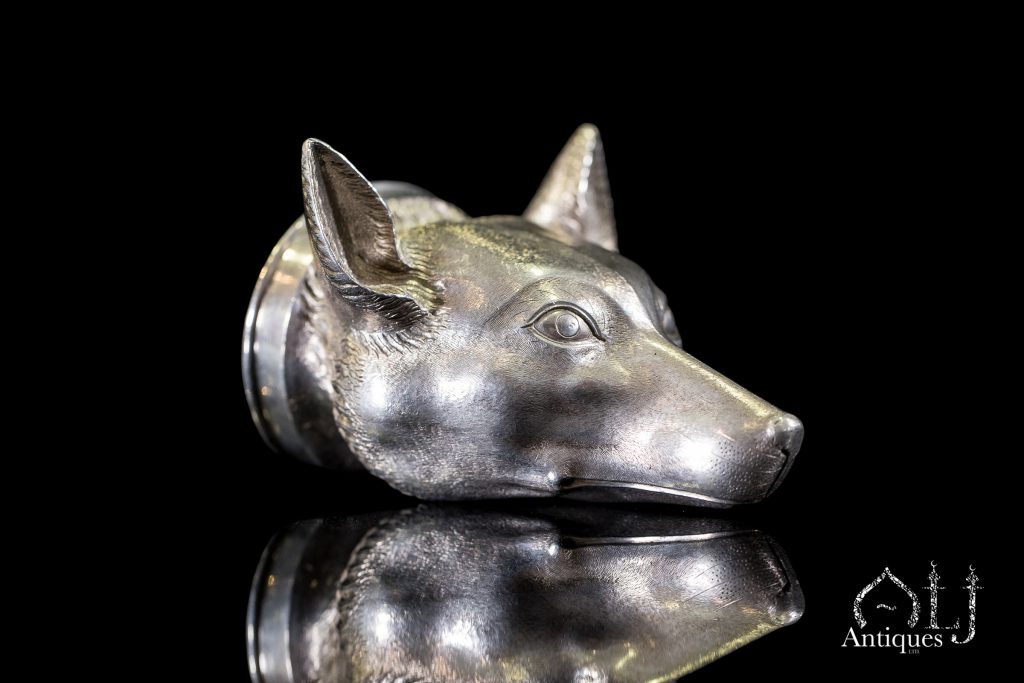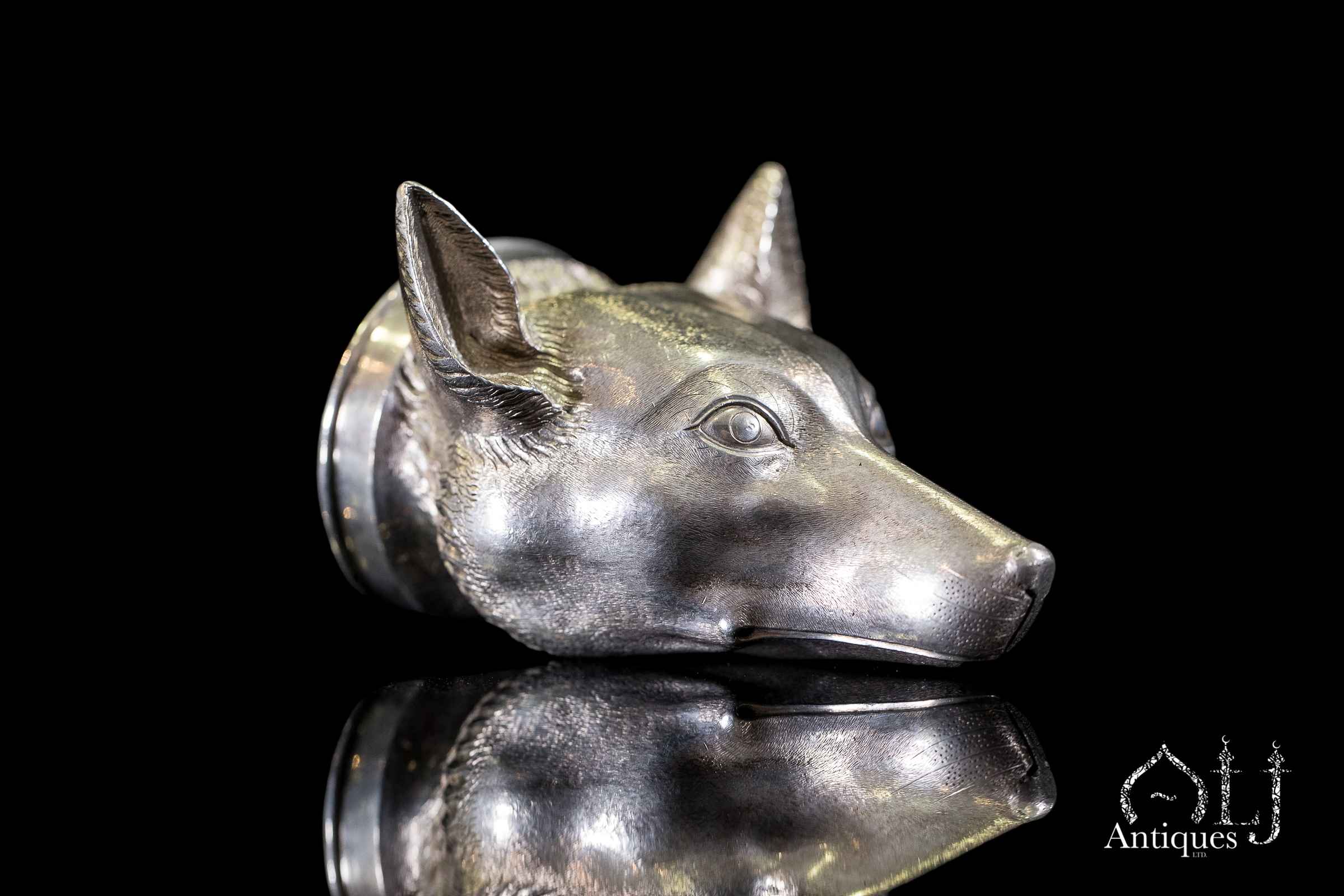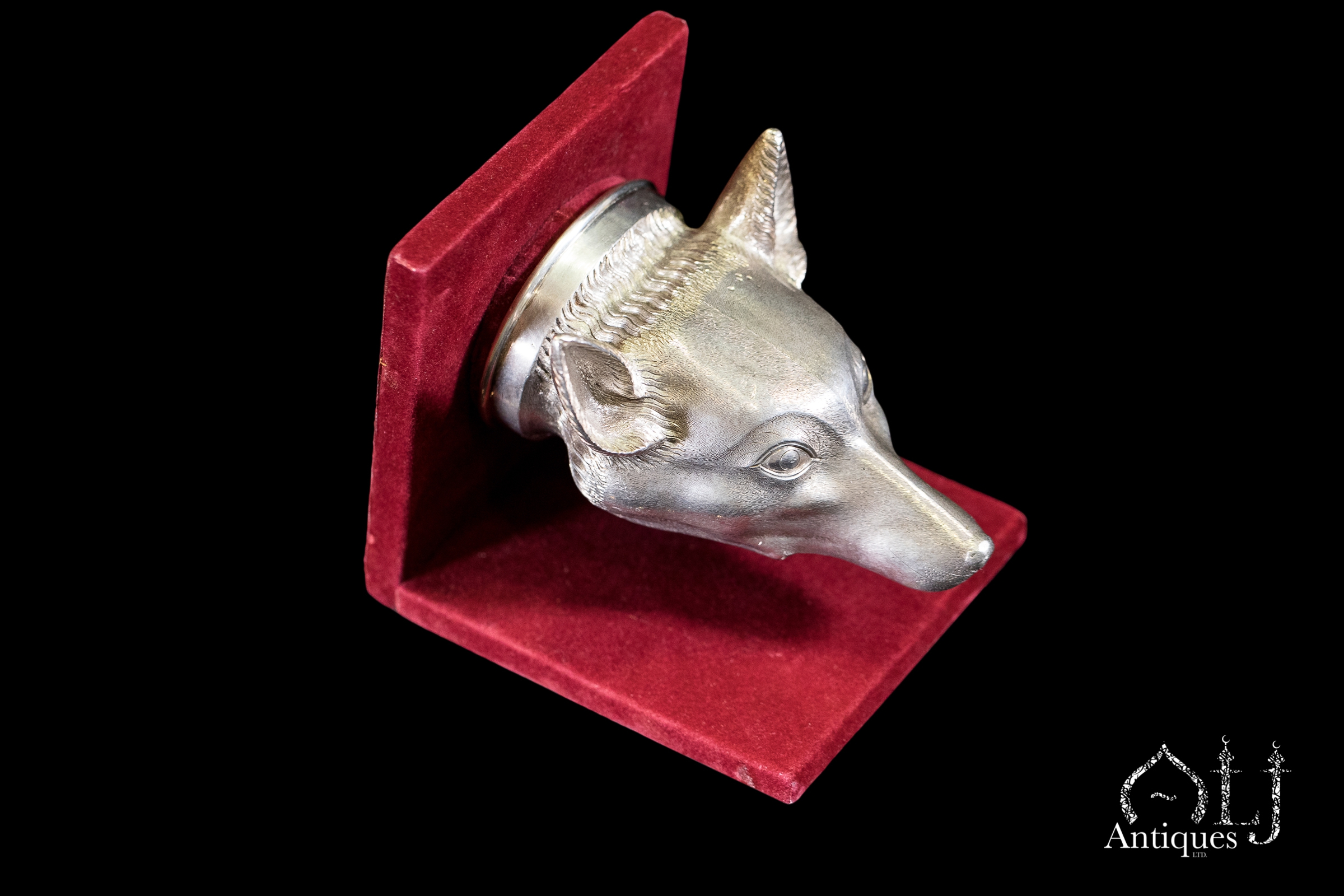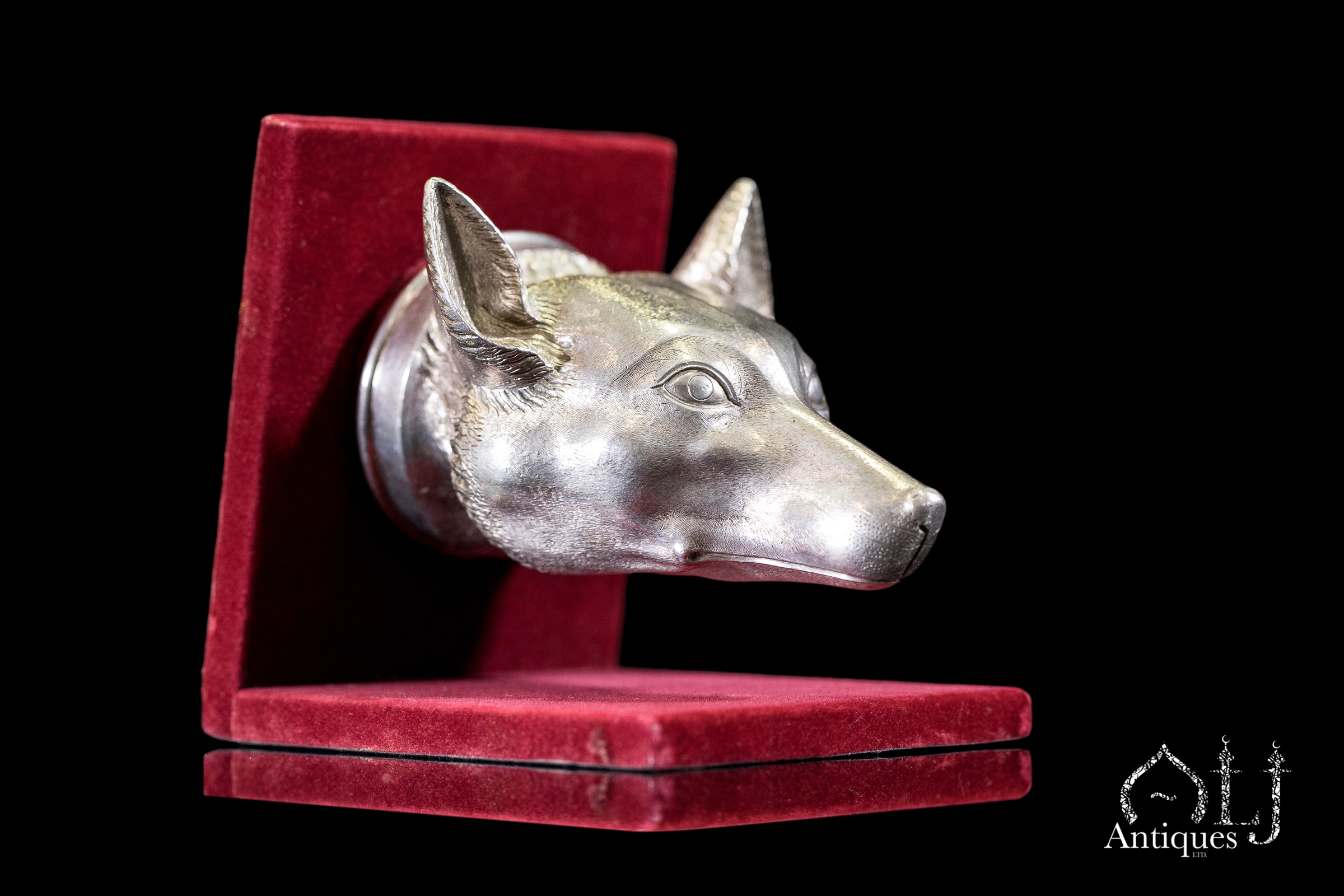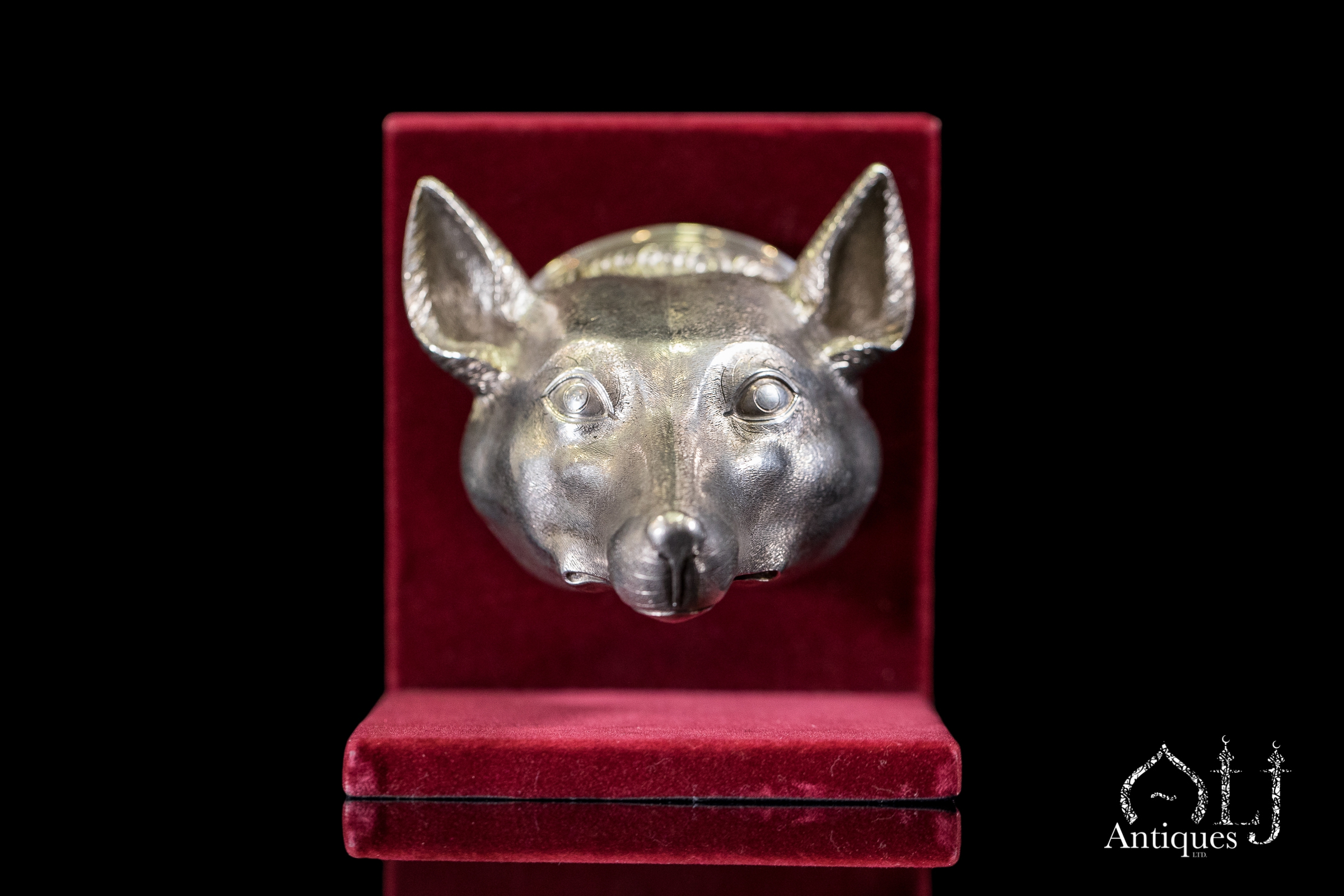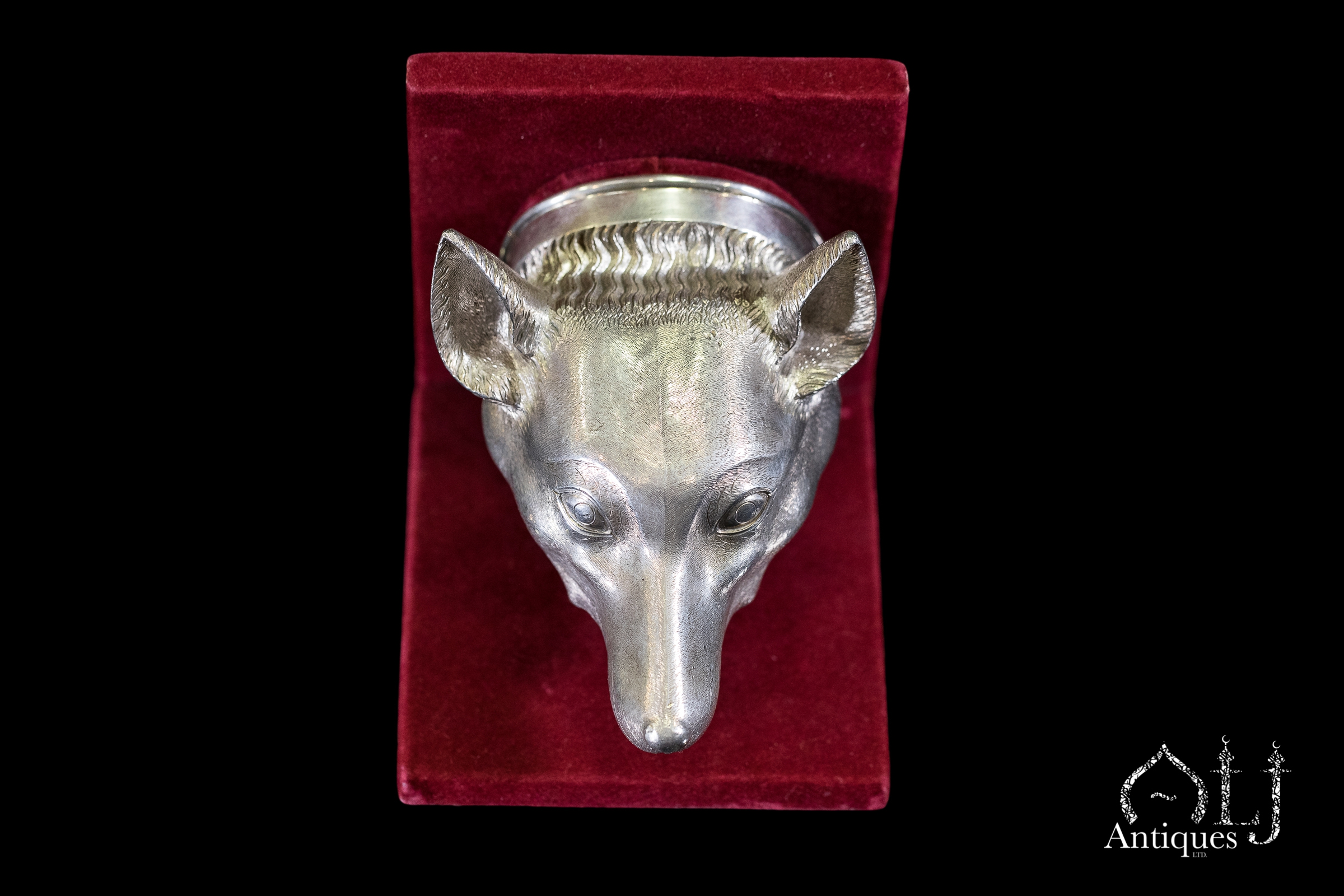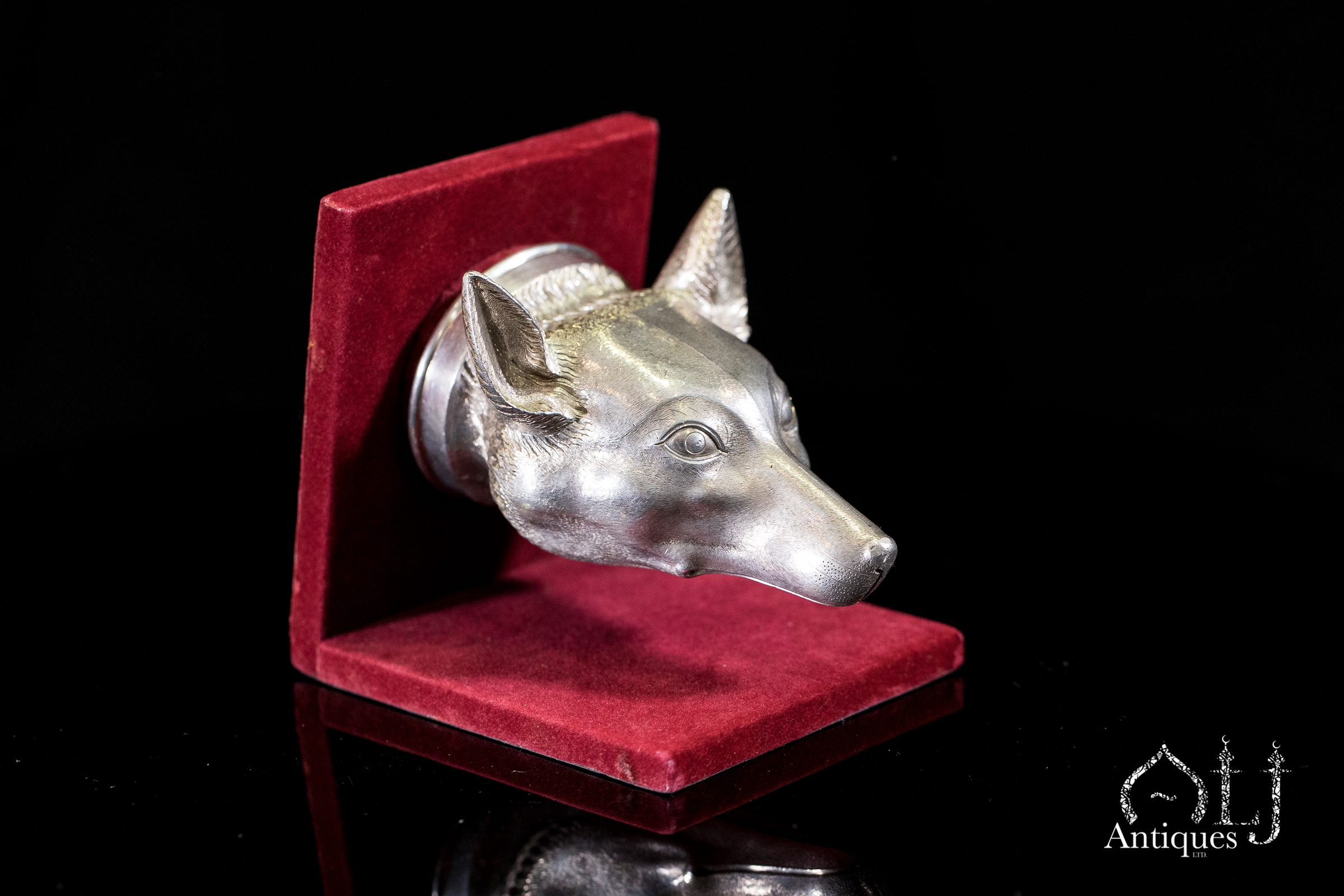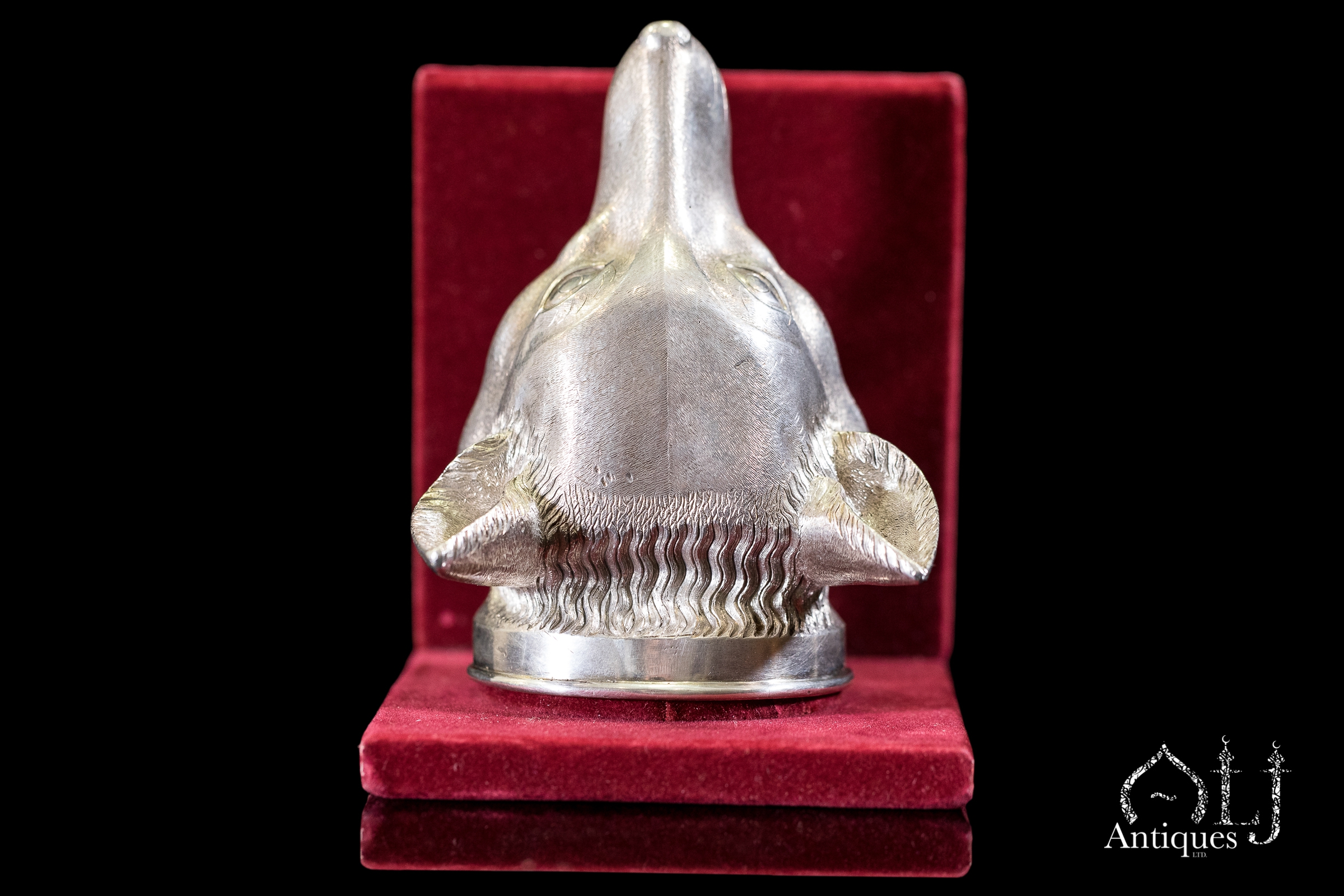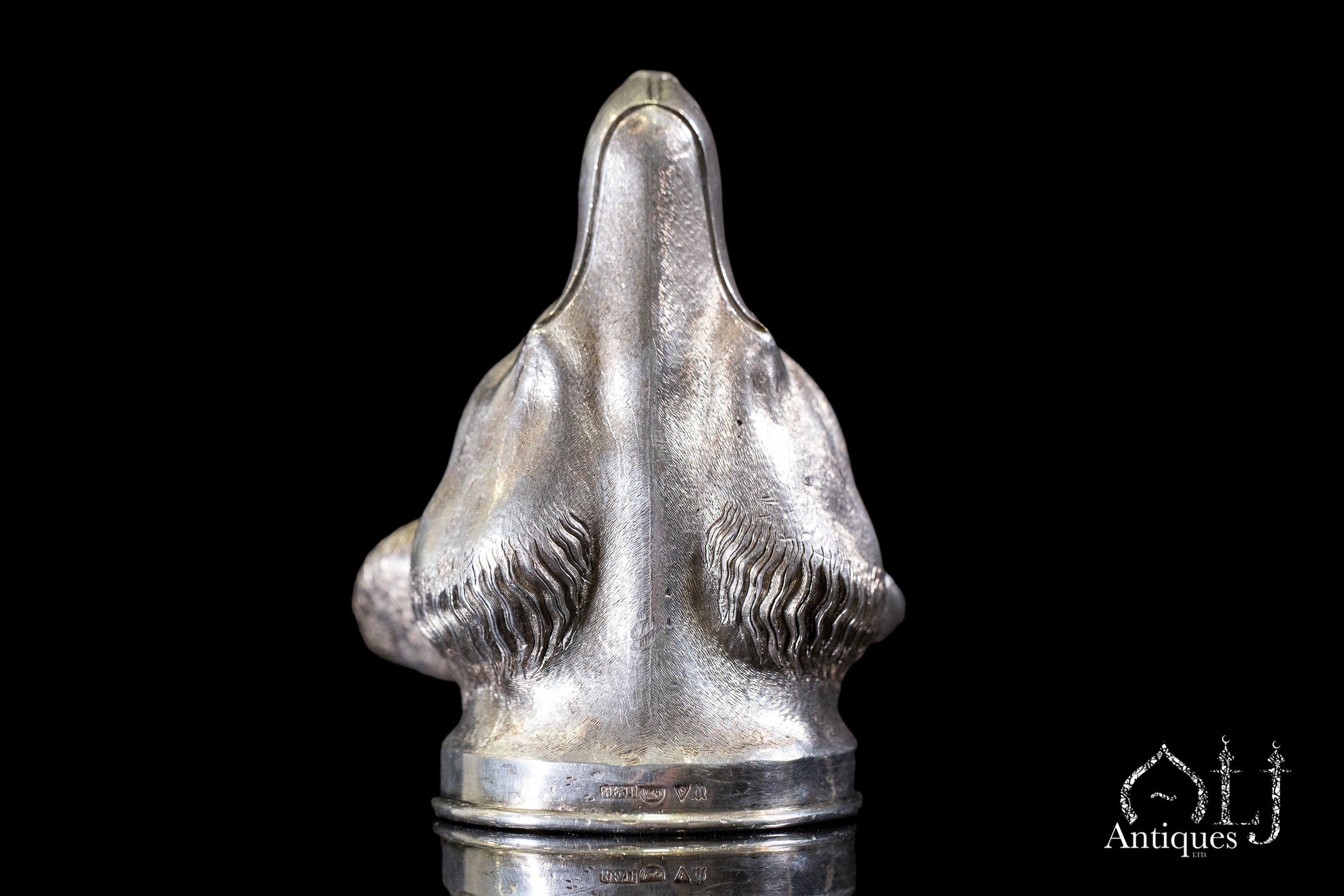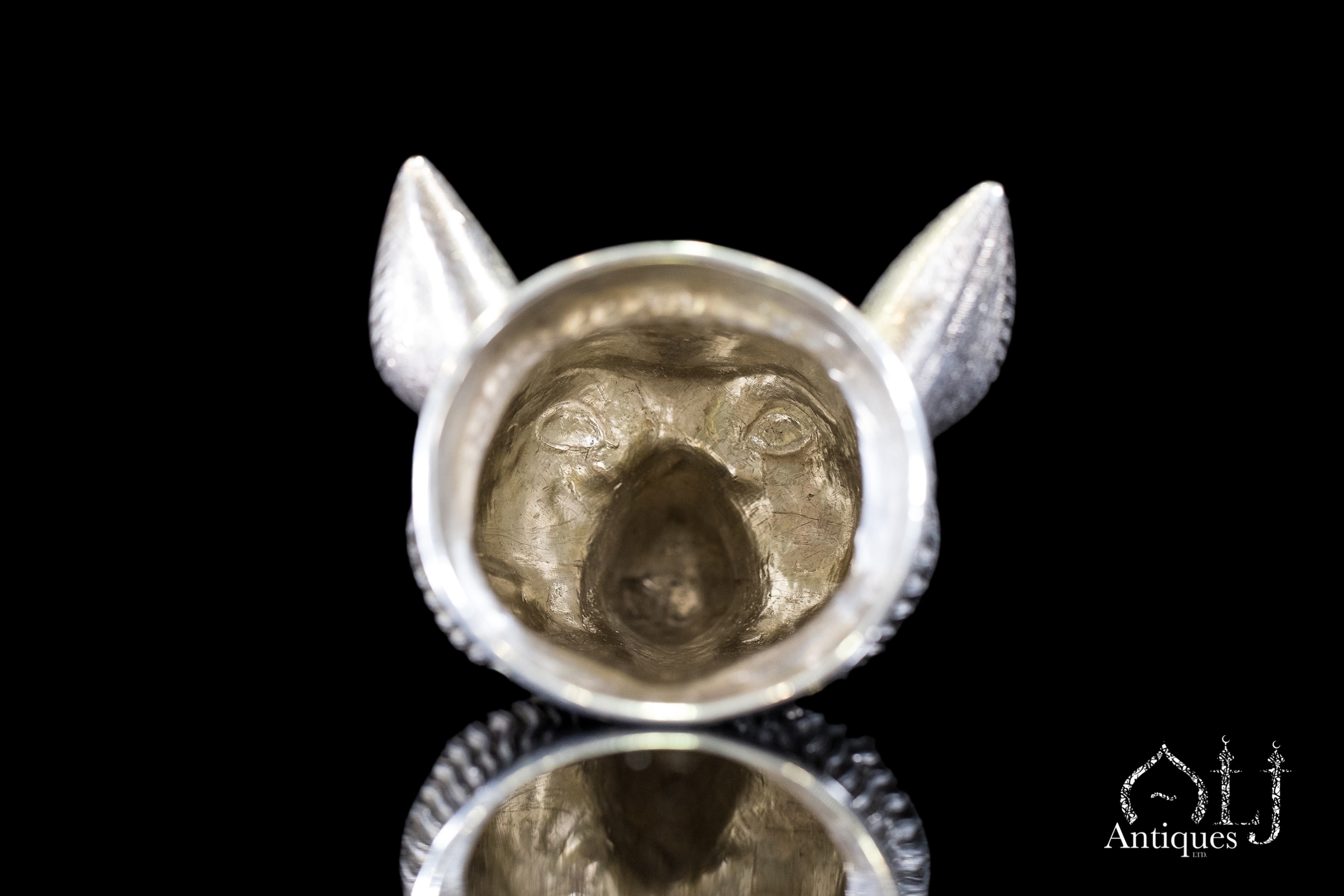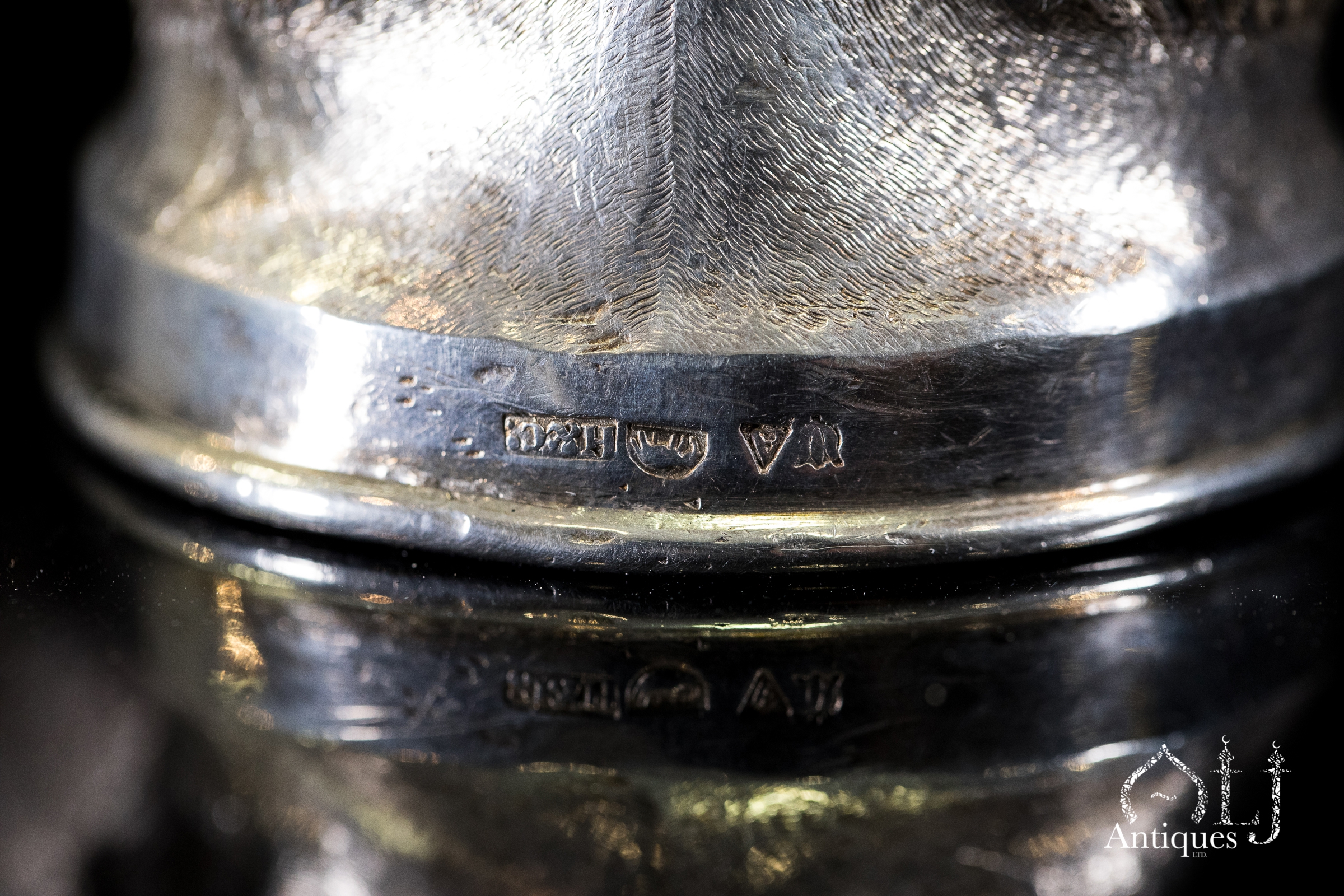Description
The idea of Stirrup cups is very ancient and was widely used in ancient civilisations such as in the ancient Persian Achaemenid Empire and was also used during the Greek and Roman empires.
Stirrup cups are normally used by the elite, the very powerful and rich in the society.
Elaborate and antique Stirrup cups can be found in Gold, Silver, Silver Gilt and also in painted and decorated fired clay or terracotta such as the various examples that can be found in Museums and major world collections that belongs to the Greek civilisation.
Stirrup cups are generally shaped and featured with animal’s heads such as dogs, horses, gazelles, stags, goats, boars, and foxes etc. and often used as elaborate drinking vessels.
This exceptional and highly-crafted silver “parting cup” is a rare example of stirrup cups, meant to be given to guests, especially when they are leaving and have their feet in the stirrups, prior to a traditional fox hunt.
It usually was filled with port or sherry.
This example is realistically modelled as a fox head with simulated fur decoration.
The maker’s mark is H & Co. with an A, an elephant, and a thistle.
This hallmark can be identified as Hamilton and Co Jewellers in Calcutta. The marks correspond to the period of 1850 -1860, when the previously featured urn of his signature is no longer struck in the sequence of marks, but the thistle still continues to be used.
Hamilton & Co. is probably the best known and celebrated British silversmith operating in India (known as the Garrard of India).
Robert Hamilton (1772-1848) arrived in India and started work in Calcutta in 1808. He opened his Jewellery and Silversmithing shop at 5 Tank Square in 1808 under licence from the East Indian Company with two partners, Henry and James Glazbrook.
Throughout Robert Hamilton career different high-status officials commissioned important pieces to him, like a vase for Rundell Bridge and Rundell in 1825, His silver work is characteristic for an always elegant shape that dismisses any unnecessary decoration, boasting the refined use of mainly plain design and consistency.
Condition: very good with minor wear and tear.
Dimensions:-
12 cm. diam. of beaker round rim.
9.5 cm. the length between the fox ears.
7 cm. high.
Provenance:-
The piece has a remarkable provenance, as it was auctioned twice at A Fine & Rare General Silver Sale: First the item was offered in 2010 at Bonham’s auctioneers and in 2015 the item was offered at Sotheby’s New York, and then the item was directly purchased from a very well known New-Yorker Fine Antiques and Art dealer.
Sotheby’s New York, Collections: Silver, Vertu, And Russian Works Of Art, 14 October 2015, Lot 450 An Indian Colonial silver stirrup cup, Hamilton & Co., Calcutta, circa 1850-60.
Bonham’s London, Fine Silver and Objects Of Vertu, 30 June 2010, Lot 134 A Rare 19th Century Indian Colonial Silver Stirrup Cup, By Hamilton & Co, Calcutta circa 1850.
Referances:-
A similar but European Stirrup cup see:
Sotheby’s New York, Collections: Silver, Vertu, And Russian Works Of Art, 14 October 2015, lot 448 A George III silver-gilt stirrup cup, James Phipps II & Edward Robinson II, London, 1809
Charles J. Jackson, 1964: English Goldsmiths and Their Marks – A History of the Goldsmiths and Plate Workers of England, Scotland and Ireland. Second Edition, Dover Publications Inc., New York. Wynyard R.T. Wilkinson, Indian Colonial Silver– European Silversmiths In India (1790 – 1860) And Their Marks. – R.T.W. Wilkinson ed., London, 1987.

